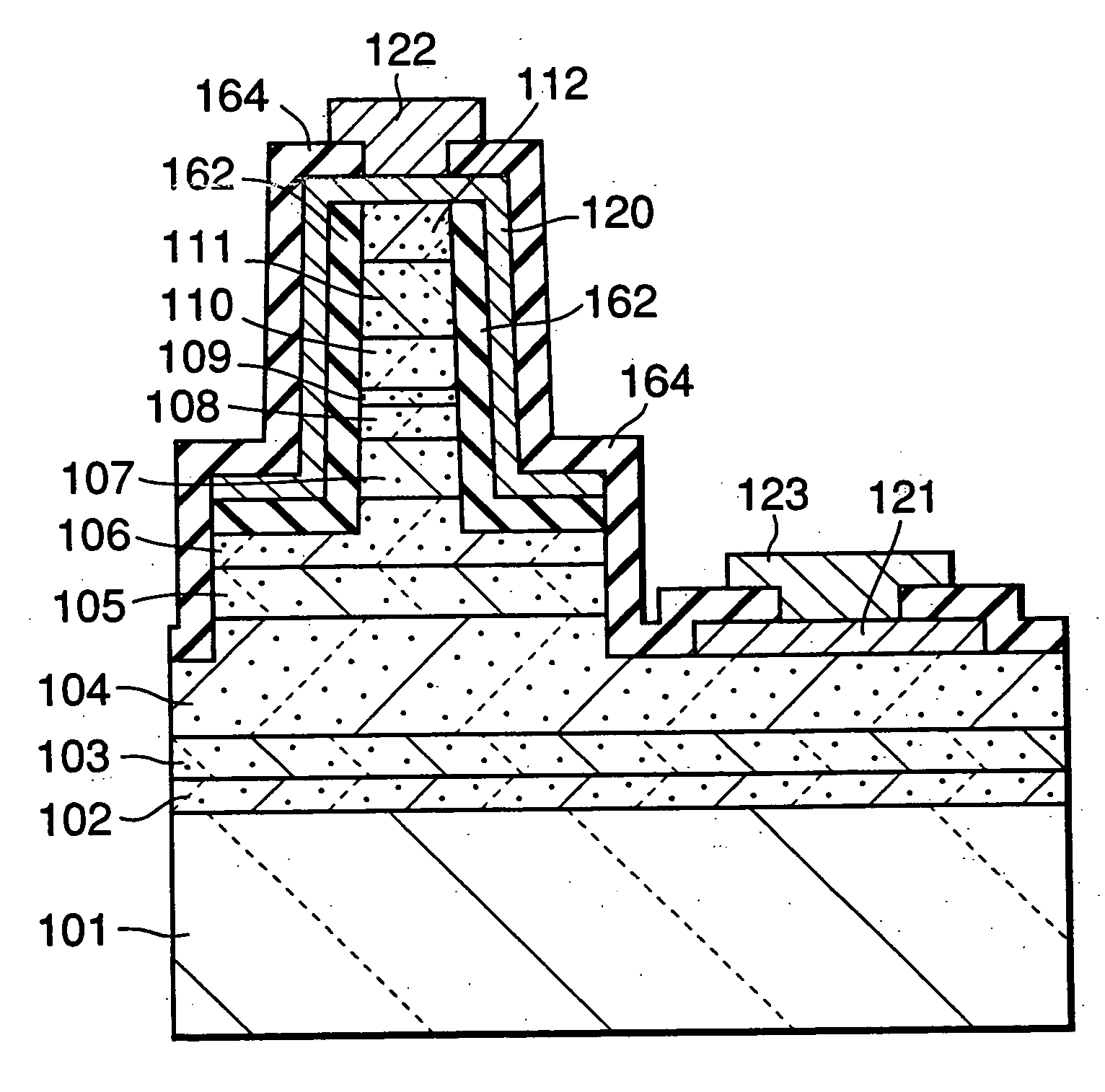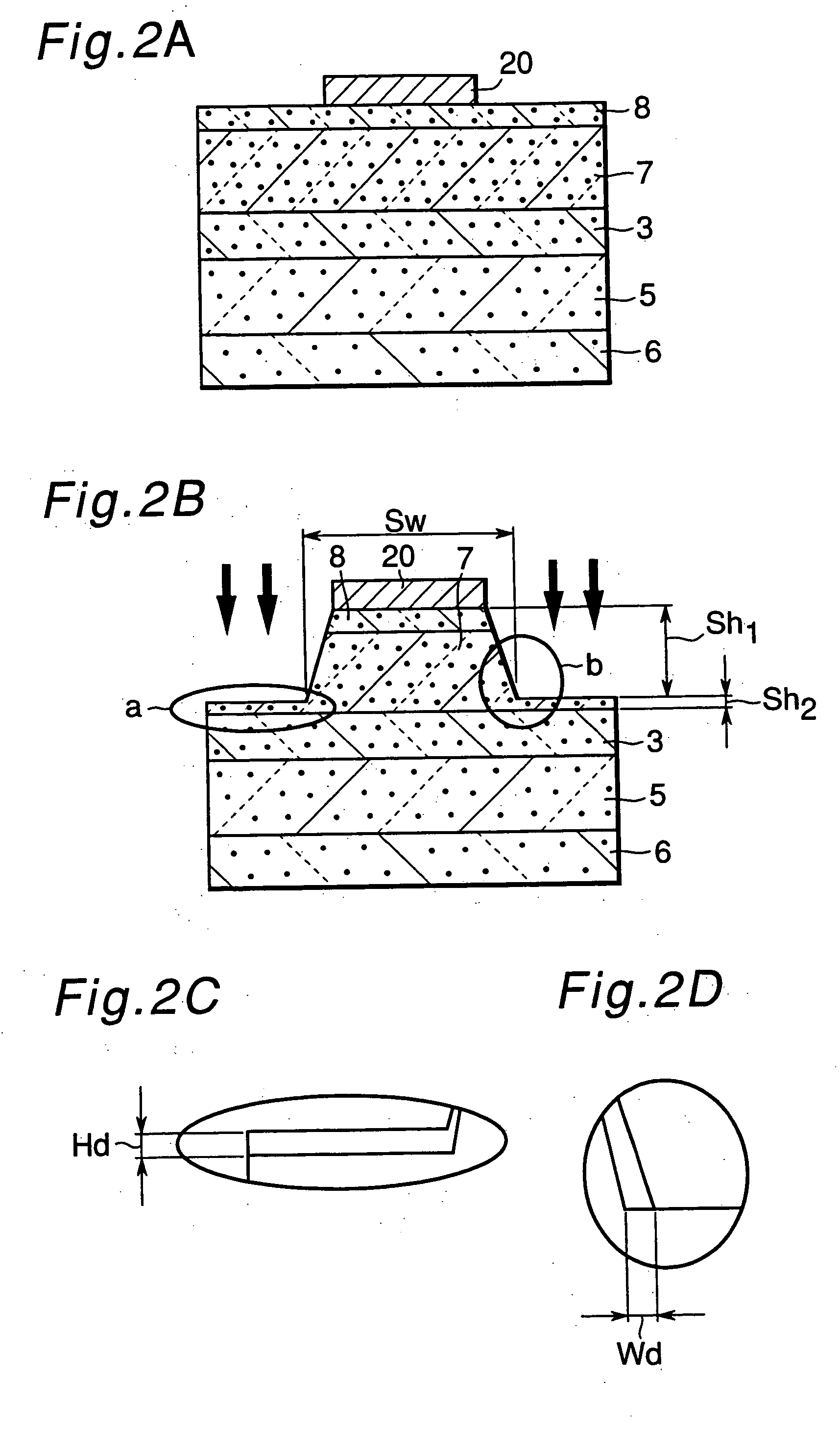Semiconductor laser device, and method of manufacturing the same
a laser device and semiconductor technology, applied in the direction of lasers, semiconductor lasers, active medium materials, etc., can solve the problems of device characteristics, device characteristics vary, device characteristics degrade, etc., and achieve excellent controllability of transverse mode, and satisfactory difference of refractive index
- Summary
- Abstract
- Description
- Claims
- Application Information
AI Technical Summary
Benefits of technology
Problems solved by technology
Method used
Image
Examples
embodiment 1
[0166] A laser device of the first embodiment will be described below. Specifically, the laser device comprising the second waveguide region C2 which has the sectional structure shown in FIG. 8 and the first waveguide region C1 which has the sectional structure shown in FIG. 9 is made as the first embodiment.
[0167] While a substrate made of sapphire, namely a material different from the nitride semiconductor is used in the first embodiment, a substrate made of nitride semiconductor such as GaN substrate may also be used. As the substrate of different material, an insulating substrate such as sapphire and spinel (MgAl2O4) each having the principal plane in either the C plane, R plane or A plane, SiC (including 6H, 4H and 3C), ZnS, ZnO, GaAs, Si, or an oxide which can be lattice matched with the nitride semiconductor can be used as long as the nitride semiconductor can be grown on the substrate. As the substrate of different material, sapphire and spinel are preferably used. The subs...
embodiment 2
[0199] The laser device is fabricated similarly to the first embodiment except for the length of the first waveguide region C1 which is set to 1 μm. In order to form the first waveguide region C1 with such a small length, the first ridge of stripe shape is formed longer than the final length of the resonator (for example, several tens to about 100 μm) and then the resonance end face is formed by etching or dividing, the substrate at such a position as the desired length of the first waveguide region C1 is obtained. As a result, it becomes more difficult to form the second ridge 201 with stable shape than in the case of the first embodiment, although the transverse oscillation mode can be well controlled even with this length. Also shorter length of the first waveguide region improves the device life slightly over the first embodiment.
embodiment 3
[0200] The laser device of the third embodiment is constituted similarly to the first embodiment except for forming the first waveguide regions C1 having length of 5 μm at both ends thereof (refer to FIG. 4B). That is, the laser device of the third embodiment has the second waveguide region C2 located at the center and the first waveguide regions C1 located on both sides of the former, while the first waveguide region C1 includes the resonator end face. The laser device of the third embodiment having such a constitution has both F.F.P. and aspect ration of the beam similar to those of the first embodiment.
PUM
 Login to View More
Login to View More Abstract
Description
Claims
Application Information
 Login to View More
Login to View More - R&D
- Intellectual Property
- Life Sciences
- Materials
- Tech Scout
- Unparalleled Data Quality
- Higher Quality Content
- 60% Fewer Hallucinations
Browse by: Latest US Patents, China's latest patents, Technical Efficacy Thesaurus, Application Domain, Technology Topic, Popular Technical Reports.
© 2025 PatSnap. All rights reserved.Legal|Privacy policy|Modern Slavery Act Transparency Statement|Sitemap|About US| Contact US: help@patsnap.com



